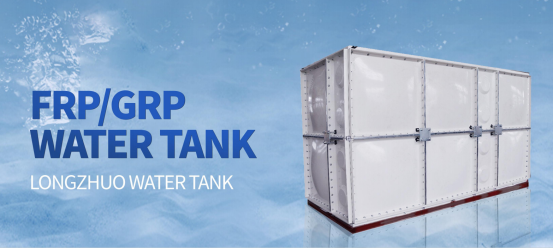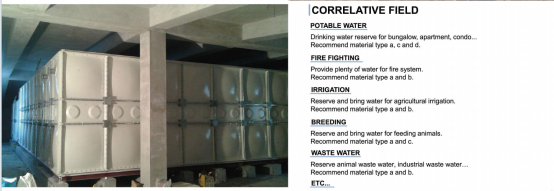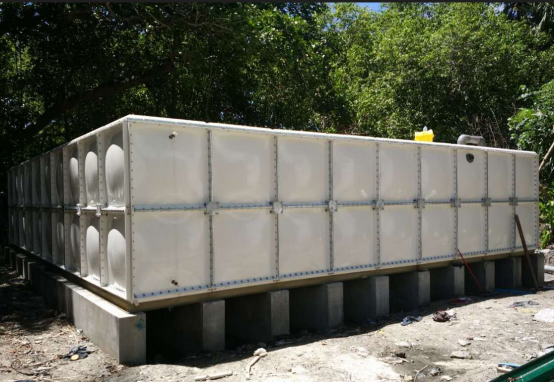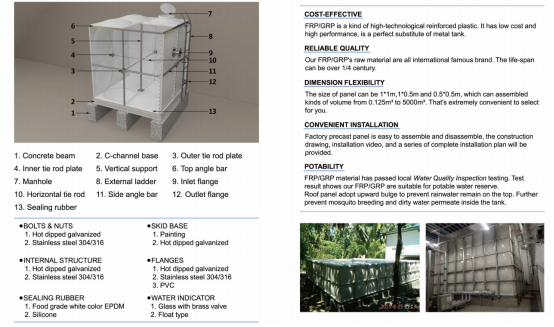Water is the lifeblood of agriculture. As global agriculture faces increasing stress from climate change, unpredictable rainfall patterns, and growing demand for food security, efficient water storage and management have become more critical than ever. For many farmers, outdated storage methods—such as rust-prone steel tanks or high-maintenance concrete reservoirs—can no longer meet the demands of modern agricultural operations.
This is where GRP (Glass Reinforced Plastic) water tanks provide an effective solution.
GRP (Glass Reinforced Plastic) water tanks are designed to address many of agriculture’s water challenges through their durability, hygiene, flexibility, and cost-effectiveness. These tanks are made using fiberglass-reinforced thermosetting resins, offering a balance of strength and corrosion resistance.

1. Durability and Service Life
GRP tanks resist corrosion from moisture, chemicals, fertilizers, and UV exposure.
Their lifespan ranges from 30 to 50 years, outperforming metal or concrete tanks.
Long Zhuo’s GRP water tanks are engineered with tensile strength ≥ 60 MPa and flexural strength ≥ 100 MPa, suitable for both indoor and outdoor use.
GRP tank deployed in a coastal agricultural area maintained its structure after 10 years of continuous exposure to high humidity and saline air—while metal tanks failed within 3 years.
2. Lightweight and Modular – Easy to Transport and Install
GRP tanks are up to 70% lighter than steel, which facilitates transport and reduces installation costs.
Long Zhuo offers SMC panel-based designs, which can be manually assembled on-site without heavy machinery—suitable for remote or mountainous farmland.
Sizes and capacities are customizable, ranging from 1,000 liters to over 1,000,000 liters.
3. Water Quality and Hygiene
The smooth inner surfaces prevent algae growth and bacterial buildup, reducing maintenance and ensuring safe water for irrigation and livestock.
Water absorption rate is ≤ 1%, lowering contamination risk.
There is no rust, scaling, or leaching—appropriate for both potable and non-potable water.
4. Resistance to Environmental Conditions
The tanks withstand high temperatures, direct sunlight, freezing, and wind loads.
UV-resistant topcoats and corrosion-proof panels prevent structural degradation in outdoor environments.
They are suitable for fertilizer and chemical storage without reacting with tank materials.
5. Low Maintenance and Cost Savings
The tanks require minimal upkeep—no rust treatment, repainting, or internal lining is necessary.
Typical cleaning intervals are once every 12–24 months, depending on use.
Over a 30-year period, GRP tanks can reduce maintenance and replacement costs by 40–60% compared to steel or concrete tanks.
6. Environmental Considerations
GRP tanks are non-toxic, recyclable, and manufactured with lower energy consumption compared to metal tanks.
They support efficient resource use, suitable for eco-conscious or organic farming.
| Specification | Value |
|---|---|
| Panel Material | SMC (Sheet Molding Compound) |
| Tensile Strength | ≥ 60 MPa |
| Flexural Strength | ≥ 100 MPa |
| Barcol Hardness | ≥ 60 |
| Water Absorption | ≤ 1% |
| Glass Fiber Content | ≥ 25% |
| Max Bottom Deformation | ≤ 8 mm |
| Max Side Wall Deformation | ≤ 0.5% |
| Available Capacities | 1,000 – 1,000,000+ liters |
| Design Options | Square / Rectangular / Custom |
| Certification | ISO9001, SGS, CE (upon request) |
Crop Irrigation: Store rainwater or pumped groundwater to operate drip irrigation or sprinkler systems, ensuring water availability during dry periods.
Livestock Drinking Systems: Provide clean, algae-free water to cows, poultry, pigs, and goats, reducing the risk of waterborne diseases.
Rainwater Harvesting: Collect rainwater on farms with limited water infrastructure to reduce reliance on municipal water.
Greenhouse and Hydroponics: Maintain water quality for recirculating systems or nutrient dosing.
Wastewater and Fertilizer Storage: Used for temporary holding of fertilizer runoff, organic leachate, or greywater on sustainable farms


Installation Tips:
Panel-based tanks can be manually assembled on-site; heavy machinery is not required.
Ensure a level foundation (concrete slab or compacted gravel).
Connect inlet/outlet piping and overflow according to system requirements.
Maintenance Recommendations:
Inspect and clean tanks every 12–24 months.
Check fittings and joints for leaks.
For freezing climates, drain or insulate tanks to prevent ice damage.
